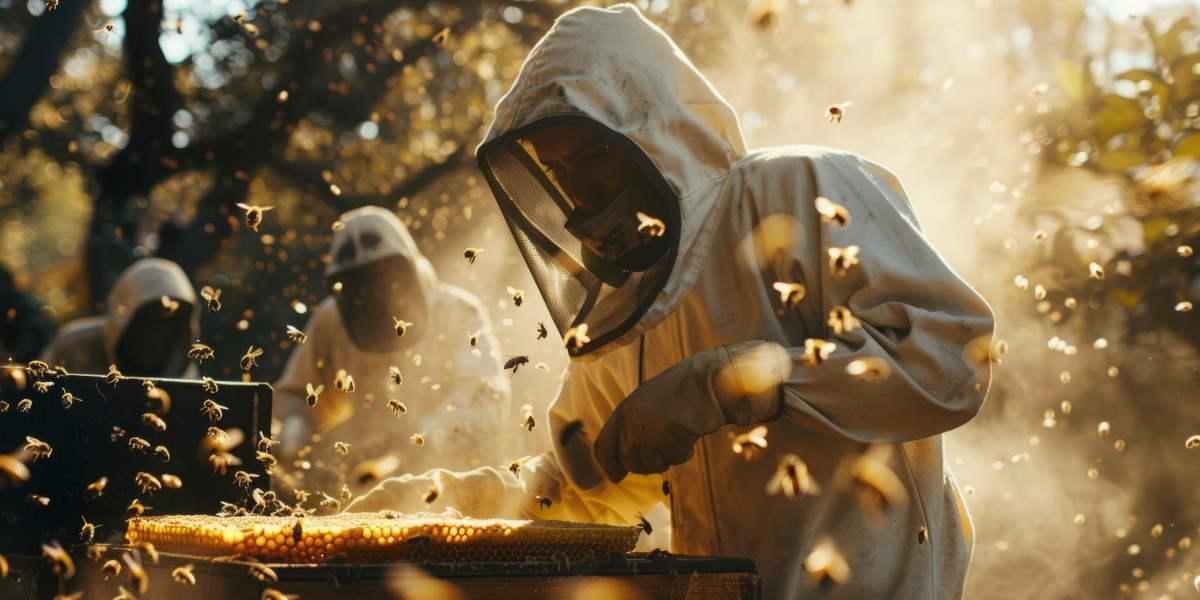Introduction
Bees play a crucial role in maintaining global food security and biodiversity. However, due to climate change, pesticide use, habitat loss, and disease, bee populations are steadily declining. This alarming trend has prompted beekeepers and scientists to seek advanced, sustainable methods to preserve and monitor these vital pollinators. One breakthrough solution is the Beehive Monitoring System powered by monitoring bee health using smart sensor technology, which enables continuous health monitoring and real-time data collection. Combined with research into the uncharted world of bees, these technologies are transforming modern beekeeping.
The Importance of Bee Health
Bees pollinate over 75% of flowering plants and 35% of global crops, including fruits, vegetables, and nuts. A decline in bee health directly impacts agricultural productivity and ecosystem balance. Despite their importance, bee behavior, health, and internal hive conditions have remained largely hidden from human observation until now.
What Is a Beehive Monitoring System?
A Beehive Monitoring System is an IoT-based technological solution that allows beekeepers to remotely observe and track the internal conditions of their hives. These systems use smart sensors to gather crucial data, such as:
Hive temperature and humidity
Bee movement and activity
Sound frequency patterns (buzz analysis)
Hive weight
CO₂ and gas levels
Brood presence and queen health
This continuous stream of data enables proactive beekeeping, reducing colony collapse disorder (CCD) and supporting hive longevity.
Monitoring Bee Health by Smart Sensor Technology
1. Temperature & Humidity Sensors
Maintaining a stable temperature and humidity inside the hive is vital for bee health and brood development. Sensors immediately alert beekeepers if the environment becomes unfavorable, such as during extreme weather or hive insulation failure.
2. Sound and Vibration Sensors
Bees communicate through vibrations and sound frequencies. These sensors interpret buzzing patterns to detect stress, swarming behavior, or queen loss. Abnormal changes can indicate parasitic infestation or disease.
3. Weight Sensors
A sudden drop in hive weight may signify honey theft, reduced food storage, or decreased bee population. Monitoring weight trends helps track nectar collection, honey production, and colony activity.
4. Gas and Air Quality Sensors
CO₂ buildup or increased methane levels can signal poor ventilation or a sick colony. These sensors contribute to hive health diagnostics and provide alerts in case of toxic exposure.
5. AI & Data Analytics
Smart beehive systems often incorporate AI-powered platforms that analyze data trends and suggest actionable insights. For instance, predicting a swarm or notifying the need for supplemental feeding.
In-Depth Information of the Uncharted Bees World
Despite centuries of observation, much of the inner life of bees has remained a mystery. Thanks to modern technology, we are now uncovering the secrets of this intricate society.
1. Bee Communication Patterns
Bees communicate through dance (waggle dance), pheromones, and buzzes. By analyzing acoustic data, researchers can now map behavioral patterns and decode specific signals used for foraging or warning.
2. Hive Hierarchy and Queen Dynamics
Smart sensors help monitor queen bee activity, her laying patterns, presence, and health. This gives us unprecedented access to understanding how colony leadership impacts overall productivity and morale.
3. Brood Behavior and Lifecycle
Smart cameras and temperature sensors track brood nest temperatures and identify anomalies. They help detect brood diseases like American Foulbrood or chalkbrood early, before they spread.
4. Seasonal Hive Behavior
Understanding how bees adapt across seasons from winter clustering to spring blooming helps optimize hive management. This includes feeding, rotation, and migration for pollination services.
Benefits of Smart Beehive Monitoring
Remote Monitoring: No need to open hives frequently, which can disturb the bees.
Predictive Analysis: Early warnings about hive issues, reducing colony losses.
Data-Driven Decisions: Optimize feeding, treatment, and harvesting times.
Improved Research: Provides valuable datasets for entomologists and ecologists.
Sustainable Beekeeping: Helps maintain strong colonies for pollination and honey production.
Real-World Applications
Commercial Beekeepers use these systems to manage hundreds of hives with fewer manual checks.
Researchers deploy sensor-equipped hives to study climate impact on pollinators.
Urban Beekeepers in smart cities are integrating IoT hives on rooftops and parks.
Challenges and Considerations
While beehive monitoring systems offer significant benefits, there are challenges:
Initial Cost: Advanced sensors and IoT devices can be expensive.
Connectivity: Remote locations may face internet or power limitations.
Learning Curve: Requires some technical knowledge to interpret data and use dashboards effectively.
However, with increasing demand and innovation, costs are gradually decreasing, and user interfaces are becoming more user-friendly.
The Future of Beekeeping
The fusion of technology and nature is redefining how we interact with one of the most crucial species on Earth. As smart sensor technology continues to evolve, we’ll gain deeper insights into bee behavior, improve their care, and reverse population decline. The in-depth information of the uncharted world of bees is slowly revealing itself buzz by buzz, byte by byte.
Conclusion
Beekeeping is no longer limited to traditional observation. With the rise of smart beehive monitoring systems, we are entering a new era of sustainable, intelligent apiculture. From monitoring bee health using smart sensor technology to unlocking in-depth information of the uncharted bees world, these innovations are essential for saving the bees and, by extension, ourselves.








